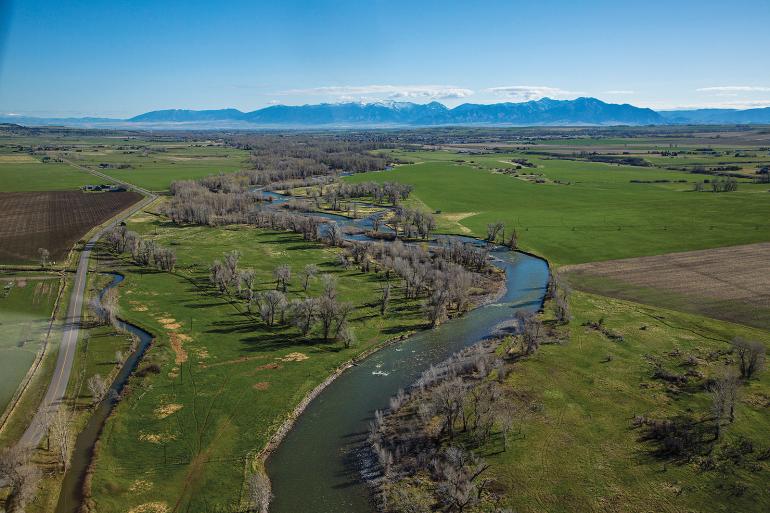Ripple Effect
Restoration on the lower Gallatin.
It’s called the Lower Gallatin Watershed: the area from the mouth of Gallatin Canyon east to Jackson Creek, north along the Bridgers to Dry Creek, and westward far enough to encompass the small creeks of Camp and Godfrey. Of its 23 streams, 15 are considered impaired by the Montana Department of Environmental Quality (DEQ).
From 1990 to 2016, over 93,000 acres in Gallatin County were converted from open space to urban sprawl. The number of wetlands is decreasing. The species that rely on riparian areas are facing increasing threat.
Two years ago, the DEQ decided to allocate this area as its next priority—a “focus watershed,” as it were. Aside from drought, the major issues in our backyard basin are sedimentation and E. coli. Over the next three years, the agency will put up $500,000 every year for restoration projects.
“We’re trying to figure out the best methods for retaining the maximum amount of water.”
Heading the planning effort is the Gallatin Water Collaborative (GWC), a coalition of government agencies, nonprofits, private entities, and other groups, including Montana State University. Formed in 2021, the group meets once every other month to discuss strategy. Additionally, the 33 stakeholders are broken down into work groups to address specific issues: water quality, water availability, resilient landscapes, and education & outreach.
Holly Hill, coordinator for the GWC, says that a major priority is identifying prime groundwater-recharge areas. “We’re trying to figure out the best methods for retaining the maximum amount of water,” she says. While this could take shape with new developments such as permeable parking lots, the majority of the group’s focus is dedicated to irrigation practices with regard to agriculture. There are different ways to irrigate cropland. One of the most common, as well as historic, is surface (also known as flood) irrigation. This consists of water being delivered to a field by a ditch, pipe, or channel, to eventually flow directly over the land. The other most common method is sprinkler irrigation, which, as the name implies, involves distributing water through a pipe system and into the air to simulate falling water.
Each technique has its pros and cons, but Holly says that the GWC is taking a hard look at the efficiency of each system with regard to its location in the watershed. “We’re still identifying gaps in our understanding,” she says. “But current irrigation practices may change depending on what our research shows and the incentives provided to landowners.”
Other GWC priorities include restoring riparian corridors, encouraging new development to hook up to centralized public wastewater systems, and guiding this development to use low-impact technologies (e.g., permeable parking lots).
The GWC is submitting applications for on-the-ground work this fall, and if all goes according to plan, projects should be underway next summer. With so many stakeholders—and so much at stake—exercising a successful collaborative effort is no walk in the park.
Holly feels confident, though. “There are a lot of stories out there that are all doom and gloom,” she says. “But when I sit down in the same room with all the different parties involved, it’s hard not to get a feeling of hope.”












